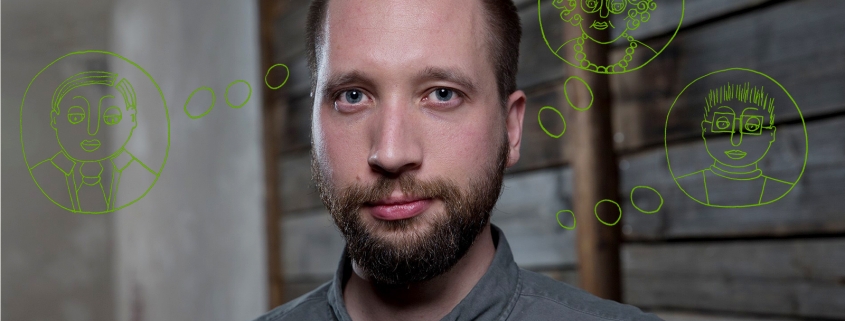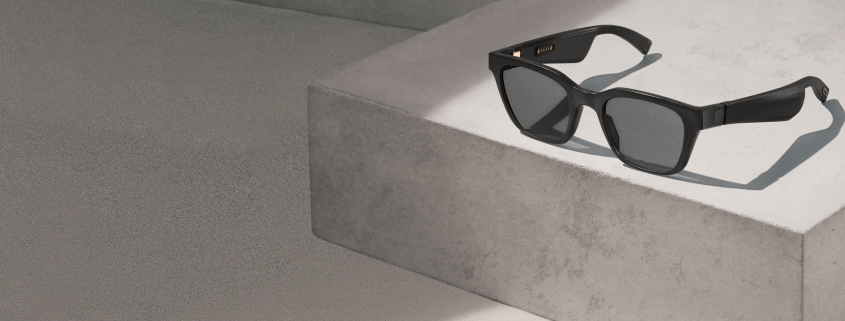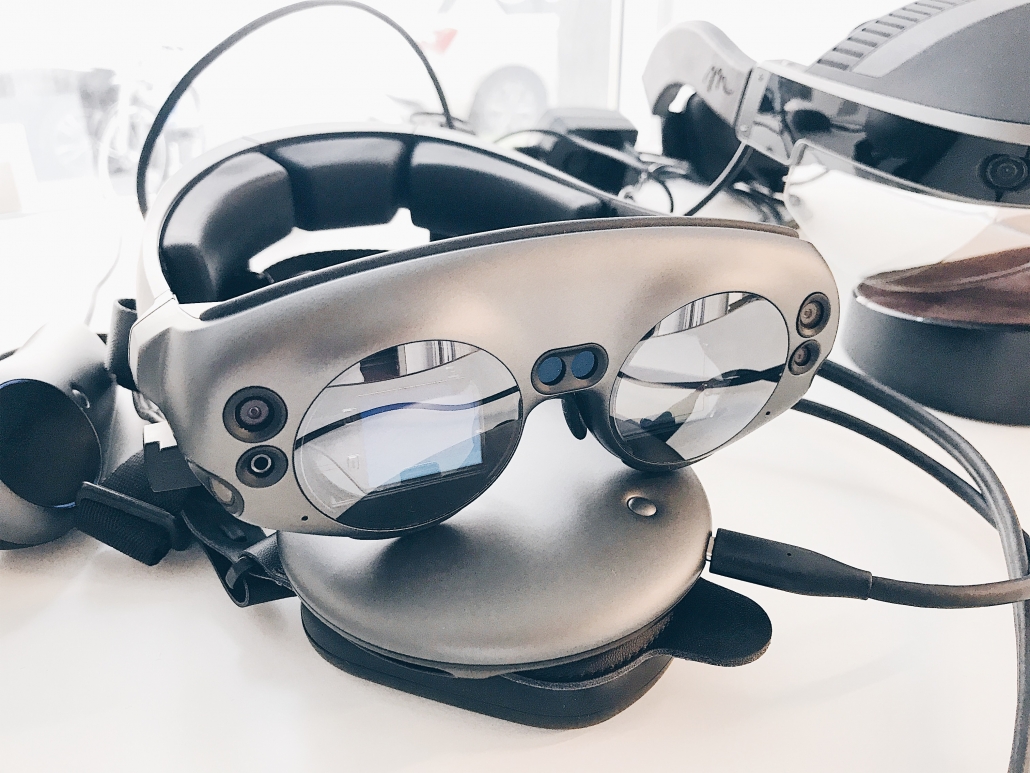Innovation is the driving force of the economy. Without it, there is a standstill. But innovations only work if they solve people’s problems. Dennis Pfisterer calls for a new approach to innovation.
IN-NO-WAY-TION
Innovation is the driving force of civilization. The engine of the economy. Without innovation, there’s nothing but standstill. And standstill is death. Everything old must be disrupted and new technologies help set us free. Digital! Social! Global!
STOP!
A new year begins and when if not now will it make sense to question how we want to tackle things in the future. Are there any new ideas or insights that will help us in 2018? Ones that will characterize us personally, commercially or even socially in the long term? Innovations promise progress, but is that really the case? Is innovation worth striving for?
INNOVATION. WHAT THE…
By definition, innovation is a deliberate and targeted process of change towards something original and new. The search for new knowledge or solutions therefore puts curiosity, creativity and desire for renewal at the fore. That explains why the term “innovation” is so eagerly and often chosen to sell novelties of any kind. From thought constructs such as communism, which sought to change individuals and society from the ground up, to very tangible products like the iPhone X, which largely claim to do the same.
If we start with the relatively new research field of neuroscience and thus the deeper realms of our brain, we realize how deeply that concept is anchored in us. If we consider, for example, the model of the limbic map developed by Dr. Hans-Georg Häusel more closely, innovation is one of the three main forces that significantly influence our thinking and actions: stimulus. In very simple terms, our brain subconsciously (in the limbic system) examines all sensory information, whether it’s a) helping us to maintain our status quo, b) stimulating us in some way, or c) possibly lending us power.
In evolutionary terms, innovation can actually be understood as a primitive human urge to free oneself from the status quo in order to secure our future. Of course, anything that’s new and innovative is always dependent on a specific geographic and social context and as such dependent on the zeitgeist. Logically, innovations are only relevant for a limited period of time. We all know the embarrassing moment when mom excitedly talks about Facebook in hopes of some recognition or the acquaintance from the country who thinks that this look or some other is totally Berlin style. Today hype, tomorrow mainstream, and the day after tomorrow old-school. One innovation overtakes the next. And that’s nothing new. But back to the question. In the future, will we really only be successful if we totally “think different” and beat our new ideas into our heads with full power?
ARE YOU DOWN WITH UBER-INNOVATION?
In any case, a problem arises when we as people can no longer keep up with our own innovations. That’s because the rapid development of technology has recently and yet again received a good kick-starter thanks to digital change. Unfortunately, the same cannot be said of human evolution. On the contrary, humans have unfortunately always been and are naturally more inclined to slow and linear change. Our human processor has received far fewer performance updates over the past 50,000 years than computers over the last 50 years.
If one considers the exponential developmental curve of computing power, which follows what’s known as Moore’s Law, it can be assumed that this will reach a dizzying level in just a few decades. As such, a single supercomputer will likely attain the computing power of all human brains worldwide sometime between 2050 and 2060. The thought of what would be possible – in the technical sense – at that point is truly fantastic. But how will our largely neolithic brain handle the constant confrontation with AI-enhanced superbrain cars and vacuum cleaners in emotional terms?
Even today, more and more people seem to be suffering from the excessive demands of innovation overflow and the associated wealth of information that comes with it. Which is particularly absurd because they usually come with the promise of greater personal freedom, self-determination and happiness. At the same time, an increasing number of studies established a direct correlation between the rise of depression and the increasing use of new technologies, suggesting the so-called ‘digital detox’ as a potential treatment. Even if the architects of the big innovation forges in Silicon Valley were to confess that their technology is destroying the social fabric of the real world, seriously questioning the simple inference that innovation = new technology may be called for.
ARE WE ‘HOOKED ON INNOVATION’?
In addition to the extreme speed with which it progresses, the great danger of digital transformation may lie in the overuse and abuse of the word “innovation” itself. Anything promising global, digital-social disruption is celebrated at tech summits, in start-ups, marketing departments and social networks. This, in turn, only leads to innovative ideas brandishing a sort of ‘wow, how awesome’ technology label. Out of sheer enthusiasm for innovative technology, the truly exciting question of where it should take us is all but lost.
Of course, you could say we live in a free market. As long as it can be used to make money, and the user feels they can get through everyday life more easily or quickly, then all’s well. But on the other hand, who’s convincing whom here? Facebook recently ended its AI program because it invented a more efficient language that its creators no longer understood. How long will the masses pay attention to the flood of innovations is questionable. In addition to any block-chain-based cyber currency, attention is likely to be the true currency of the future.
The mechanics that one uses to gain permanent attention from users is called “computer-aided persuasive technology”. The term comes from the behavioral scientist BJ Fogg, now head of the Stanford Persuasive Tech Lab, where technology theorists learn the latest tricks of manipulation. Nir Eyal describes in detail how to create emotional dependency in his bestselling book “Hooked: How to Build Habit-Forming Products”. The most important part in his model is the trigger that transitions into flesh and blood. A like here, a notification bubble or vibration alert there – all to provoke user reactions. Snapchat’s Streaks, for example, reward the user for activity with small flame icons that go out if no more snaps are sent within 24 hours. And how long will these developments continue to go well? The stock market seems to be asking itself the same question and isn’t betting on rising rates for Snap Inc.
INNOVATION. FOR REAL!
So, before innovation gets completely out of hand, we’ll free it from the bullshit bingo and put some sense back into this vital concept. For example, with two well-known approaches: the honest human-centric approach and its close – very reasonable – customer value. This real-deal team might have the power to really do something revolutionary, instead of reflexively only going in the direction of technology-driven digital social disruptive progress. Because innovation that does not benefit or even harm people simply isn’t innovation at all.
As such, a step to the left, to the right, or even backwards at times, would no longer be a contradiction of innovation, provided it creates added value. A few examples: In a transformed, digital future teeming with digital voice assistants, could a service provider with real people in their support team not be at the forefront? Or could not a slightly less slim mobile phone, which offers the battery charging time of a Nokia 3310, establish itself as the smarter option? Or a car that does not have to be attached to a cable for hours, but rather whose battery can be easily switched by remote control at any gas station, not be the obvious choice for urban explorers?
In principle, those who use technology in the future to produce proximity to reality may count among the winners of digitization. Innovative new brands, such as the English manufacturer of cycling clothing Rapha, use existing social and digital channels to bring people together in the real world and have them truly experience their products in an active way. After the content-is-king-years in which “media” and “the message” were almost indistinguishable from each other, in a post-fake bullshit era, actually experiencing products almost inevitably comes to the fore.
In many areas of life, what’s supposedly old is rediscovered and represented in new innovative packaging. In the future, however, the use of as much new technology as possible, such as the virtual, augmented or mixed reality, will become less and less important. Rather, it will be crucial to use technology innovatively to create a product experience that moves the users emotionally and at the same time answers the question “Why this brand?” Such truly “immersive” experiences take more time and cost more money than purely digital measures, but also provide a demonstrably more sustainable added value for users and also generate unique brand content for all marketing channels.
Wherever this year’s journey takes you and your company, innovation will drive you. But innovation must not become a problem for people, but rather a solution to problems. As such, a key challenge for brand owners will be seeing through innovation and seeing when it’s a dead end for users.
The amount of data from business and research that’s already available allows us quite clearly to sketch a technology-driven image of the near future. The question is to what extent we want to make this reality. This year, let’s allow ourselves to hit the breaks for such In-NO-WAY-tions instead of instinctively hitting the like and follow buttons. Instead of spending a lot of time looking for the right innovation, we can use it to drive real innovation. And sometimes, it only takes a very small step in the right direction to bring the greatest benefit to our customers.










